Rare Rides Icons: The Lincoln Mark Series Cars, Feeling Continental (Part XII)

Lincoln was in a bad way at the turn of the Sixties, both financially and in terms of its product. The company lost hundreds of millions (adjusted) in the early and middle portion of the decade, when it invested in and then promptly canceled the Continental Division. Attempting a rebound, Lincoln dumped lots more cash into a new unibody platform that was exclusive to Lincoln models.
The new lineup was on sale from 1958 to 1960 and was unfortunately introduced at the start of a sharp economic recession. However, even after the recession ended Lincoln’s gaudy and overworked styling caused customers to steer clear of Lincoln and purchase Cadillacs instead. Lincoln lost $60 million ($550 million adj.) more.
1961 heralded the arrival of an all-Continental lineup, the Elwood Engel design that was instantly popular and saved the company. However, the new and streamlined (in all ways) Lincoln lineup spared no room for a Continental Mark series. The Mark slumbered until 1968.
The personal luxury car (PLC) status of the first and second Continental in the Forties and Fifties did not prove sustainable as a Lincoln product. The failure was down to the special nature of the first two Continentals, followed by the lazy gingerbread action that created the Mark III, IV, and V. Elsewhere in the company, the Thunderbird was a hugely successful second-tier PLC. And General Motors continued to market the Cadillac Eldorado and Buick Riviera, joined by the Oldsmobile Toronado in 1966.
The turn of the calendar into the Seventies would see less expensive PLC offerings arrive, which meant the PLC genre was suddenly accessible to the middle market consumer. It was a new third tier of PLC: Think of the Pontiac Grand Prix, the Chevrolet Monte Carlo, and the Chrysler Cordoba. The PLC was experiencing a resurgence! Much to the chagrin of Detroit, the Seventies would be the last decade where the genre was relevant in any meaningful way. Lincoln needed in on the action, and fast.
The 1961 Continental made it through the remainder of the Sixties in a single generation. It was an unusual move to keep a platform around for so long, but the Continental was successful and Lincoln needed to save money. Through two refreshes (1964 and 1966) the Continental was updated with more trim, and a new hardtop coupe arrived to compete with the likes of the upscale Imperial Crown Coupe and Cadillac Coupe de Ville. However, even though the new two-door pumped up sales 36 percent upon introduction, it was too big and formal and could not compete with the likes of the Eldorado.
Lincoln revisited the idea of a halo coupe sold as a Mark: a two-door that would be entirely separate from the Continental line and have a different body. Enter Lee Iacocca, developer and consistent champion of the PLC. The beginnings of the new model occurred in 1965. In September that year, Iacocca was the VP of passenger cars and trucks at Ford. He went to Gene Bordinat, VP of design at Ford, and suggested he should add a Rolls-Royce grille to a Thunderbird. Time for a brief Thunderbird sidebar.
It’s important to bear in mind the Thunderbird was in its fourth generation from 1964 to 1966, and things were still very positive for Ford’s breakout PLC star. It finished the three-year run of its fourth generation with over 236,000 sales. But the fifth generation of 1967 to 1971 was where things went off the rails.
Suddenly there was a Thunderbird range that included a two-door hardtop, a two-door formal Landau model, and a four-door Landau sedan with coach doors, but no convertible. The new Thunderbird had a different formula than it used since inception: Ford turned Thunderbird into a larger car to pull the model closer to a Lincoln offering, and emphasize luxury. It moved away from unibody construction and switched to a body-on-frame platform.
Early styling was not what the consumer wanted (your author likes the ‘67 to ‘69), and Ford attempted to rectify the issue in 1970 with a gawky coffin nose like Pontiac used. While none were stunning, the hardtop looked much better than the Stutz-like roof of the Landau, and both were better than the awkward Landau sedan with its multi-piece and mandatory vinyl roof. Sales tumbled every single year, from a high in 1967 of 77,976 down to 36,055 in 1971.
Iacocca was keenly aware of the fifth Thunderbird’s failings, and wanted to spread around its development costs via a new halo model. The most important thing for Lincoln to set its sights on at the time was the all-new front-drive Eldorado. Introduced in 1967 on the E-body, the Eldorado (and ‘66 Toronado) were a radical departure for General Motors and ushered in a new era of styling. Compare the stodgy looks of a ‘67 Imperial Coupe to the new Eldorado, for instance.
It was important to associate the new Mark with the right car in Lincoln’s history, which meant the hand-assembled Mark II from the Continental Division. The unibody Mark III through V were not worth inclusion in the family portrait and had been shuffled off to the Home for Forgotten Marks by the late Sixties. The new coupe would wear Mark III badging, and exist as the most expensive model of Continental. As Continental was the only model Lincoln offered at the time, the company was unwilling to let the Mark III stand on its own.
Mark III would make its branding as exclusive as possible, and did not associate itself with Lincoln at all. There was no Lincoln badging on the car body, any of the paperwork from the factory, nor did Lincoln appear on the window sticker. The VIN plate said Continental on it too. Though Ford didn’t admit its association, it was the same strategy used to sell the Continental Mark III (by Lincoln) of 1958. Brochures had a Ford logo in the corner, instead of a Lincoln crosshair.
Branding aside, the Mark III project was a brief one. It was underway from September 1965 to late 1967 and was completed as cheaply as possible. Iacocca returned to the formula he’d used to create the hugely successful new Mustang: Build an exciting new vehicle model using as many off-the-shelf parts as possible, and put it on a platform that’s already been paid for. It worked with the Mustang, it would work with the Mark III, and it worked a couple of decades later with the Chrysler minivans. We’ll pick up there next time.
[Images: Ford, General Motors, Chrysler]
Become a TTAC insider. Get the latest news, features, TTAC takes, and everything else that gets to the truth about cars first by subscribing to our newsletter.

Interested in lots of cars and their various historical contexts. Started writing articles for TTAC in late 2016, when my first posts were QOTDs. From there I started a few new series like Rare Rides, Buy/Drive/Burn, Abandoned History, and most recently Rare Rides Icons. Operating from a home base in Cincinnati, Ohio, a relative auto journalist dead zone. Many of my articles are prompted by something I'll see on social media that sparks my interest and causes me to research. Finding articles and information from the early days of the internet and beyond that covers the little details lost to time: trim packages, color and wheel choices, interior fabrics. Beyond those, I'm fascinated by automotive industry experiments, both failures and successes. Lately I've taken an interest in AI, and generating "what if" type images for car models long dead. Reincarnating a modern Toyota Paseo, Lincoln Mark IX, or Isuzu Trooper through a text prompt is fun. Fun to post them on Twitter too, and watch people overreact. To that end, the social media I use most is Twitter, @CoreyLewis86. I also contribute pieces for Forbes Wheels and Forbes Home.
More by Corey Lewis
Latest Car Reviews
Read moreLatest Product Reviews
Read moreRecent Comments
- Kjhkjlhkjhkljh kljhjkhjklhkjh I'd rather they have the old sweep gauges, the hhuuggee left to right speedometer from the 40's and 50's where the needle went from lefty to right like in my 1969 Nova
- Buickman I like it!
- JMII Hyundai Santa Cruz, which doesn't do "truck" things as well as the Maverick does.How so? I see this repeated often with no reference to exactly what it does better.As a Santa Cruz owner the only things the Mav does better is price on lower trims and fuel economy with the hybrid. The Mav's bed is a bit bigger but only when the SC has the roll-top bed cover, without this they are the same size. The Mav has an off road package and a towing package the SC lacks but these are just some parts differences. And even with the tow package the Hyundai is rated to tow 1,000lbs more then the Ford. The SC now has XRT trim that beefs up the looks if your into the off-roader vibe. As both vehicles are soft-roaders neither are rock crawling just because of some extra bits Ford tacked on.I'm still loving my SC (at 9k in mileage). I don't see any advantages to the Ford when you are looking at the medium to top end trims of both vehicles. If you want to save money and gas then the Ford becomes the right choice. You will get a cheaper interior but many are fine with this, especially if don't like the all touch controls on the SC. However this has been changed in the '25 models in which buttons and knobs have returned.
- Analoggrotto I'd feel proper silly staring at an LCD pretending to be real gauges.
- Gray gm should hang their wimpy logo on a strip mall next to Saul Goodman's office.
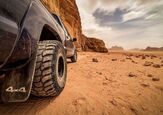


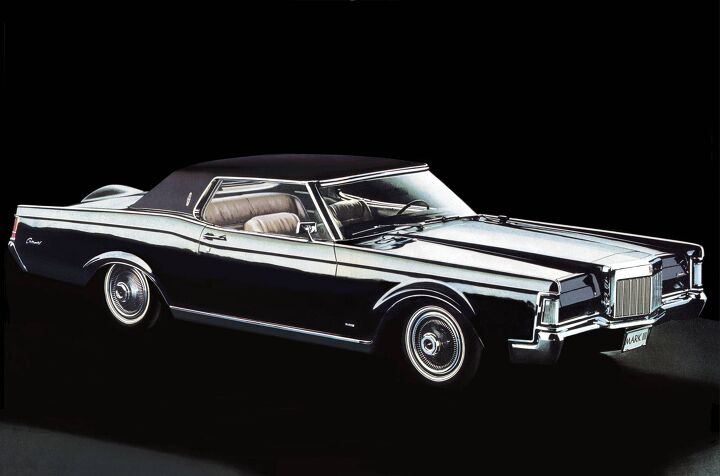





























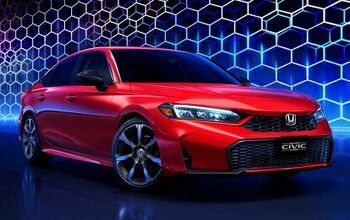


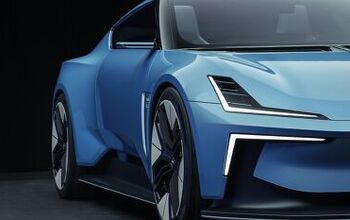
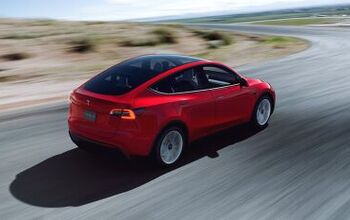
Comments
Join the conversation
Oh my dog- this is one of my favorite cars in human history! A neighbor had a '71 when I was a child and I stopped and gazed at that car every time it was parked outside its garage. Turquoise with a black vinyl. That high beltline looks awesome today!
"Mark III would make its branding as exclusive as possible... "
Meanwhile, 40 years on down the road every single Lincoln product was "MK _____"